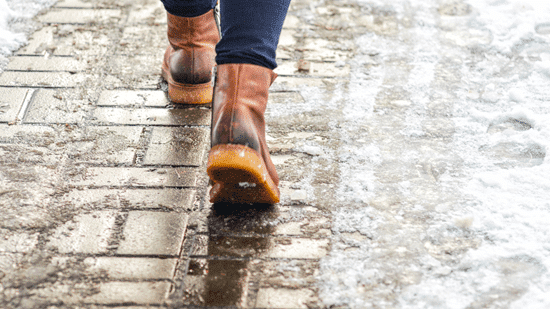
As the snowiest month of the year is upon us, it is important to know what the most common winter injuries are and how to avoid them. Personal injury attorneys see various cases in the winter, from minor slip and falls to catastrophic injuries. Here’s what you should know to protect yourself and your loved ones.
Slip and falls are among the most common types of personal injury cases in the winter. When snow or ice accumulates on sidewalks, driveways, or other high-foot traffic areas, it can create slippery conditions that can lead to slips and falls.
To avoid this type of injury, wear appropriate shoes with good traction and watch where you step when walking on snow or icy surfaces. Interestingly, snow shoveling tends to lead to slip and fall injuries; be sure to warm up beforehand, take frequent breaks throughout your shoveling session, and use proper lifting techniques if you need to lift heavy amounts of snow.
Catastrophic injuries such as traumatic brain injuries (TBI) or spinal cord injuries (SCI) occur more often in the winter due to hazardous driving conditions. Snow-covered roads can quickly become slick and cause cars to slide off course or into other vehicles.
If you’re a driver who is used to navigating snowy roads during the winter months, make sure you practice safe driving techniques by:
For those who aren’t as familiar with driving on snow-covered roads—such as new drivers—it’s best not to drive at all if there’s any chance of hazardous road conditions.
Another danger posed by cold temperatures is hypothermia—a condition caused by prolonged exposure to cold temperatures, which can lower your body temperature until it becomes life-threatening. Frostbite is a related condition that occurs when exposed skin becomes frostbitten due to extremely low temperatures. Toes, fingers, ears, noses, and cheeks are all particularly susceptible areas for frostbite because they are often exposed more than other parts of our bodies during cold weather activities like skiing or snowboarding.
To stay safe from these types of injuries when engaging in outdoor activities this winter season, make sure you:
Wintertime brings with it its own set of unique hazards that we must prepare ourselves for before venturing outside. By understanding what these hazards are and how we can protect ourselves against them, we can ensure that we remain safe while enjoying our favorite cold-weather activities this season! However, even with the best planning, accidents occur.
If you or someone you love has been injured by the negligent or wrongful conduct of another, you deserve justice—and Salenger, Sack, Kimmel & Bavaro, LLP can help.
Contact us online or call (800) 675-8556 to schedule a completely free and confidential consultation with an experienced personal injury lawyer in New York.